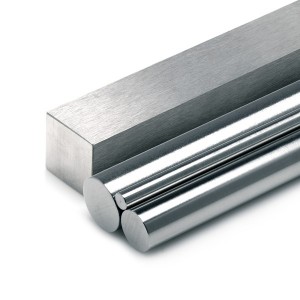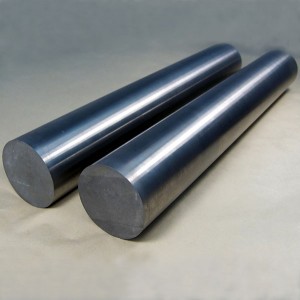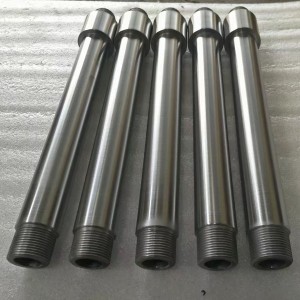Silver sputtering target material for electronic component
Silver target material is a material used in vacuum coating technology, mainly used in magnetron sputtering process to form a thin film on the surface of the substrate by sputtering. The purity of silver target material is usually very high, reaching 99.99% (4N level), to ensure that the prepared thin film has excellent conductivity and reflectivity. The size specifications of silver target materials are diverse, with diameters ranging from 20mm to 300mm, and thicknesses can also be customized according to requirements, from 1mm to 60mm. This material has good chemical stability and can adapt to various complex processing environments, so it is widely used in multiple industries.
| Dimensions | As your requirement |
| Place of Origin | Henan, Luoyang |
| Brand Name | FGD |
| Application | electronic industry,optical industry |
| Shape | Customized |
| Surface | Bright |
| Purity | 99.99% |
| Density | 10.5g/cm3 |

|
Brand |
Silver content |
Chemical composition% |
||||||||
| Cu | Pb | Fe | Sb | Se | Te | Bi | Pd | total impurities | ||
| IC-Ag99.99 | ≥99.99 | ≤0.0025 | ≤0.001 | ≤0.001 | ≤0.001 | ≤0.0005 | ≤0.0008 | ≤0.0008 | ≤0.001 | ≤0.01 |
| Typical values of ingredients | 99.9976 | 0.0005 | 0.0003 | 0.0006 | 0.0002 | 0.0002 | 0.0002 | 0.0002 | 0.0002 | 0.0024 |
| The chemical composition shall comply with the national standard GB/T 4135-2016 "Silver Ingots", and a component testing report with CNAS identification can be issued. | ||||||||||
|
Brand |
Silver content |
total impurities |
|
IC-Ag99.999 |
≥99.999 |
≤0.001 |
|
Typical values of ingredients |
99.9995 |
0.0005 |
|
The chemical composition complies with the national standard GB/T39810-2021 "High Purity Silver Ingot", and is used to prepare sputtering coated high-purity silver target materials for electronic components |
||
1. Our factory is located in Luoyang City, Henan Province. Luoyang is a production area for tungsten and molybdenum mines, so we have absolute advantages in quality and price;
2. Our company has technical personnel with over 15 years of experience, and we provide targeted solutions and suggestions for each customer's needs.
3. All of our products undergo strict quality inspection before being exported.
4. If you receive defective goods, you can contact us for a refund.

1. Raw material selection
2. Smelting and Casting
3. Hot/cold processing
4. Heat treatment
5. Machining and forming
6. Surface treatment
7. Quality Control
8. Packaging
Silver target materials are widely used in fields such as electronics and electrical appliances, photosensitive materials, and chemical materials. In the electronic and electrical industry, silver target materials are used for electrical contact materials, composite materials, and welding materials. In the field of photosensitive materials, silver target materials are used for silver halide photosensitive materials, such as photographic film, photographic paper, etc. In the field of chemical materials, silver target materials are used for silver catalysts and electronic electroplating industrial formulations.







Determining whether an item is made from real silver can be accomplished through a variety of methods, from simple visual inspection to more technical tests. Here are some common ways to tell if an item is real silver:
1. Logo and Seal:
- Look for marks or marks on items. Common markings include "925" (for sterling silver, which is 92.5% pure silver), "999" (for sterling silver, which is 99.9% pure silver), "Sterling", "Ster" or "Ag" (chemical composition) silver symbol).
- Please note that counterfeit items may also come with fake seals, so this method is not foolproof.
2. Magnet Test:
- Silver is not magnetic. If the magnet sticks to the item, it's probably not real silver. However, some non-silver metals are also non-magnetic, so this test alone is not conclusive.
3. Ice Test:
- Silver has high thermal conductivity. Place an ice cube on the item; if it melts quickly, the item is probably made of silver. This is because silver conducts heat efficiently, causing ice to melt faster than other metals.
4. Sound test:
- When silver is struck with a metal object, it emits a unique, clear ringing sound. This test requires some experience to distinguish the sound of silver from other metals.
5. Chemical Test (Acid Test):
- Silver test kits are available that use nitric acid to test silver. Leave a small scratch on the item and add a drop of acid. Color changes indicate the presence of silver. This test should be done carefully, preferably by a professional, as it can damage the item.
6. Density Test:
- The specific gravity of silver is approximately 10.49 grams per cubic centimeter. Weigh the item and measure its volume to calculate its density. This method requires precise measurements and is more technical.
7. Professional Assessment:
- If you are unsure, the most reliable method is to take the item to a professional jeweler or appraiser who can perform a more accurate test and provide a definite answer.
8. X-Ray Fluorescence (XRF) Analysis:
- This is a non-destructive test that uses X-rays to determine the elemental composition of an item. It is very accurate and often used by professionals.
Using a combination of these methods will allow you to more reliably tell whether an item is made of real silver.
Cleaning tarnished silver can restore its luster and beauty. Here are a few ways to clean silver, from simple home remedies to commercial products:
Home Remedies
1. Baking Soda and Aluminum Foil Method:
Materials: baking soda, aluminum foil, boiling water, bowl or pan.
Steps:
1. Line a bowl or pan with aluminum foil, shiny side up.
2. Place the silver item on the foil.
3. Sprinkle baking soda over items (about 1 tablespoon per cup of water).
4. Pour boiling water over items until completely covered.
5. Let sit for a few minutes. The tarnish will transfer to the foil.
6. Rinse the silver with water and dry with a soft cloth.
2.Vinegar and Baking Soda:
Materials: white vinegar, baking soda, a bowl.
Steps:
1. Place the silverware in a bowl.
2. Pour white vinegar over items until completely submerged.
3. Add 2-3 tablespoons of baking soda.
4. Let it sit for 2-3 hours.
5. Rinse the item with water and dry it with a soft cloth.
3. Toothpaste:
Materials: Non-gel, non-abrasive toothpaste, soft cloth or sponge.
Steps:
1. Apply a small amount of toothpaste to the silver item.
2. Wipe gently with a soft cloth or sponge.
3. Rinse thoroughly with water.
4. Wipe dry with a soft cloth.
4. Lemon Juice and Olive Oil:
Materials: lemon juice, olive oil, soft cloth.
Steps:
1. Mix 1/2 cup lemon juice with 1 teaspoon olive oil.
2. Dip a soft cloth into the mixture.
3. Gently wipe the silver items.
4. Rinse with water and dry with a soft cloth.
Commercial Products
1. Silver Polishing Cloth:
These are pre-treated cloths designed specifically for cleaning silverware. Simply wipe your silver with a cloth to remove tarnish and restore shine.
2. Silver Polish:
Commercial silver polishes are available in liquid, cream, or paste form. Please follow the manufacturer's instructions for best results.
3. Silver Dip:
Silver dip is a liquid solution designed to remove rust quickly. Soak the silver item in the solution for a few seconds, rinse thoroughly with water, and wipe dry with a soft cloth. Please follow the manufacturer's instructions carefully.
Tips for Maintaining Silver
STORAGE: Store silver in a cool, dry place, preferably in a rust-proof bag or cloth.
Avoid Exposure: Keep silverware away from harsh chemicals such as household cleaners, chlorine and perfume.
Regular Cleaning: Clean your silver items regularly to prevent tarnish.
By using these methods, you can effectively clean and maintain your silver jewelry, keeping them looking beautiful and shiny.











